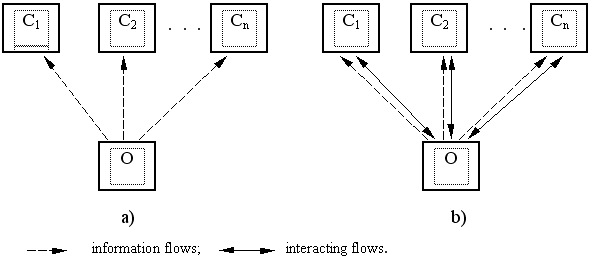2.3. Objective and subjective
V. I. Melnikov
In a classic idealize understanding from the end of the 18th century an object is that that is opposite to a subject, i.e. to a conscious. The conscious in this case was a part of an inner world and the object was a part of an external word [37].
An object was interpreted as a part of existence, opposing a human in his cognition or activity, as a circumstance (situation, status) that cause this activity and which a human must take into account. Objectiveness is a characteristic of reality to be independent of a subject and a capability of a subject to settle a reality as an independent of him and his cognition. The basis of traditional understanding of these categories is cognitive, gnosiological interpretation of relations of a human and the world, of a subject and an object. Preceded philosophy (including dogmatic Marxism) had conscious or hidden absolutization of this interpretation. As a result an existential ontological bond between a human and the world was obscured and was often interpreted from the positions of cognition and gnosiology. Modern philosophy regards a human (humans) and an object (objects) and their bonds as a process moments which could change places during reproduction and renewal of existence. Objects can be partly or to considerable extent products of humans’ activity. Although a human does not make natural objects he, due to his development, exposes its new types which were not known to his predecessors. Those are the “non-classic” objects of modern science. As regards the social existence objects, a human can consider them and realize practically (to keep, to use, to destroy) as products and results of humans’ activities.
In the TCS notions an object and a subject outwardly represent a model of an ordinary elementary CS that consists of a object and an anti-object (a subject), that are in an interaction with all basic theses, notions, and dependences of the TCS. Within a general correctness of this conception, the more precise description and behavior of the system object – subject could be determined only by a considerable complication of this system, not only examining an object and a subject in a form of divided parameters (see 1.2). The more precise description gives a presentation of a subject as an multi-objective subsystem (see analytical dependences (3)…(8)), i.e. an object – subject system is a variant of complicated multilevel system, in which every element has its own function and the behavior of a system in general could be presented with a functional structural scheme, given on the picture 3.
Figure 3. Scheme of presentation of objective and subjective in a perception regime. a) – an objective; b) – subjective.
According to this scheme, with an objective perception a multiflow scheme of information flows is realized. With a subjective perception information flows and really interacting flows are realized at the same time. But a correlation of conscious changing because of both flow influence is different and depends on flows’ power (with the effect of the mechanism of increasing of taking information signal). Information action repeatedly exceeds flows of real interaction that depends on subjective peculiarities C1, C2 etc. therefore, objective perception could be classified as a subjective one but with some assumptions, i.e. some errors. That is why for practical (including physico-technical) problems, as a rule it does not matter.

